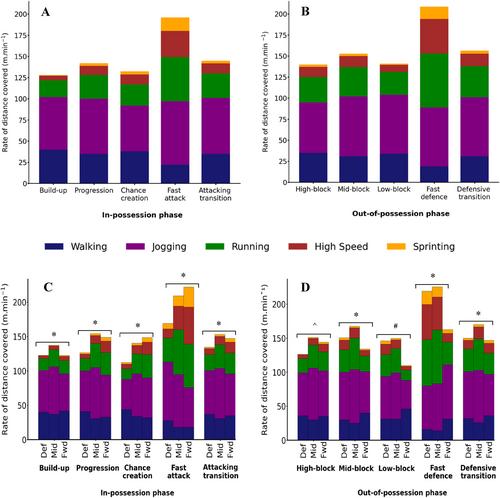Contextualised physical metrics: The physical demands vary with phase of play during elite soccer match play
Abstract
The physical demands of elite soccer match play have traditionally been measured using aggregated whole-match metrics. However, match play is increasingly considered as distinct phases of play, although the influence of phase of play on match physical demands remains largely unknown. This study compared physical intensity, acceleration and deceleration demands, between phases of play and according to playing position. The duration of each match from a major European league (n = 1083) was divided into one of five reciprocal phases (for the in-/out-of-possession team) using event and tracking data: build-up/high-block, progression/mid-block, chance creation/low-block, fast attack/fast defence, or attacking transition/defensive transition. Player tracking data were used to calculate physical intensity as the rate of distance covered (m⋅min−1) in total and within five speed categories, and the proportion of time spent accelerating and decelerating (>2 m s−2) during each phase of play. Rate of distance covered in total differed markedly with phase of play; fast attack 35%–53% greater, and fast defence 33%–50% greater, than other in-/out-of-possession phases respectively, and these effects were amplified for the rate of distance covered at higher speeds (e.g., sprinting ≥4-fold differences between phases). Match phase also affected the proportion of time spent accelerating and decelerating (highest for fast attack and chance creation, respectively), especially when in-possession for forwards and when out-of-possession for defenders (p < 0.001). Phase of play had a large effect on the physical intensity of match play, particularly rates of distance covered at higher speeds, as well as the acceleration and deceleration demands, and in a position specific manner.


 求助内容:
求助内容: 应助结果提醒方式:
应助结果提醒方式:


